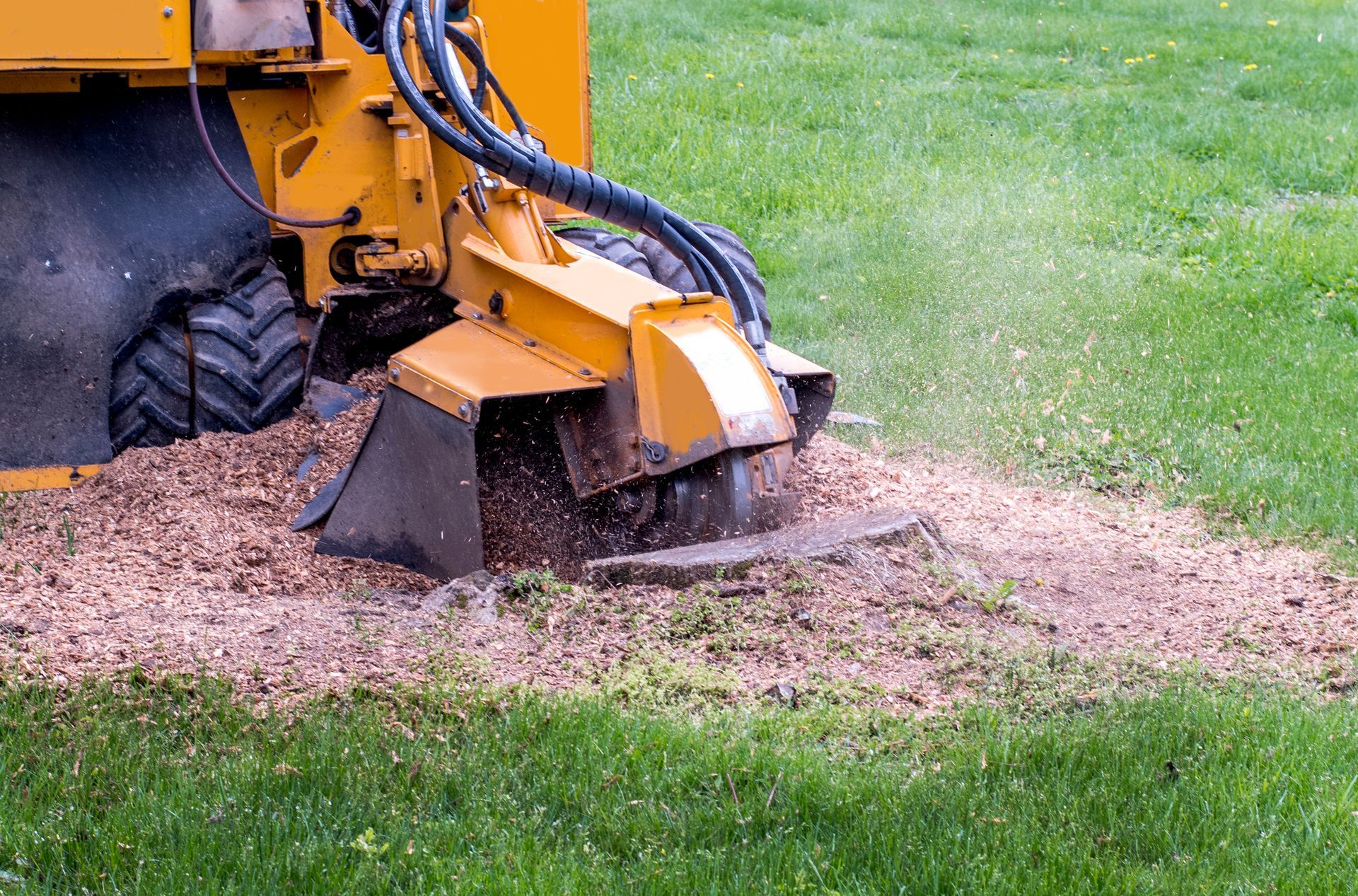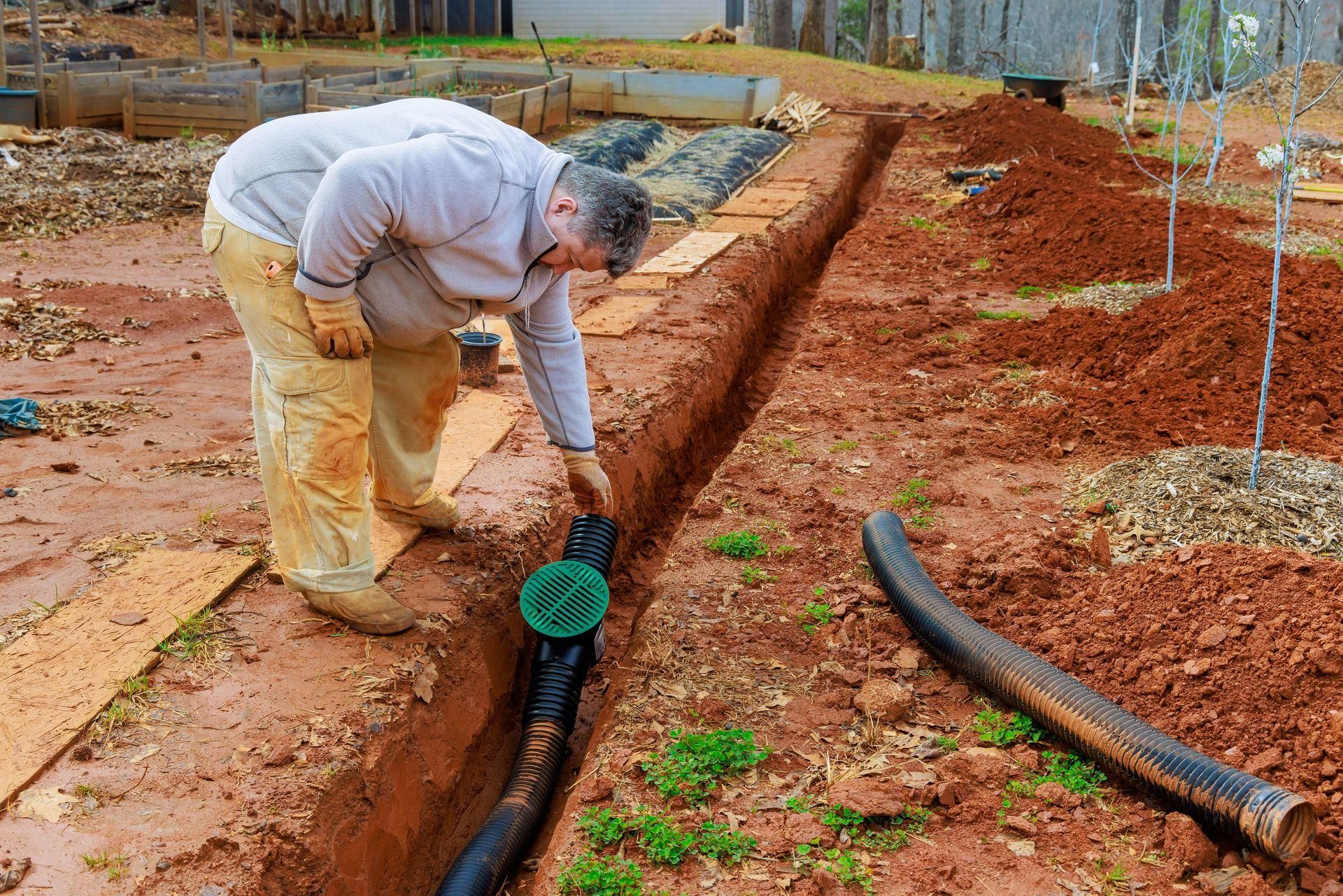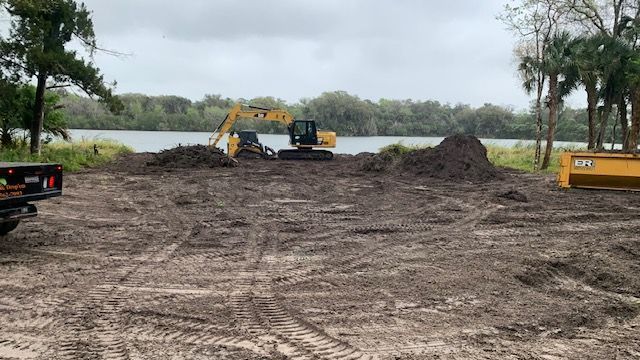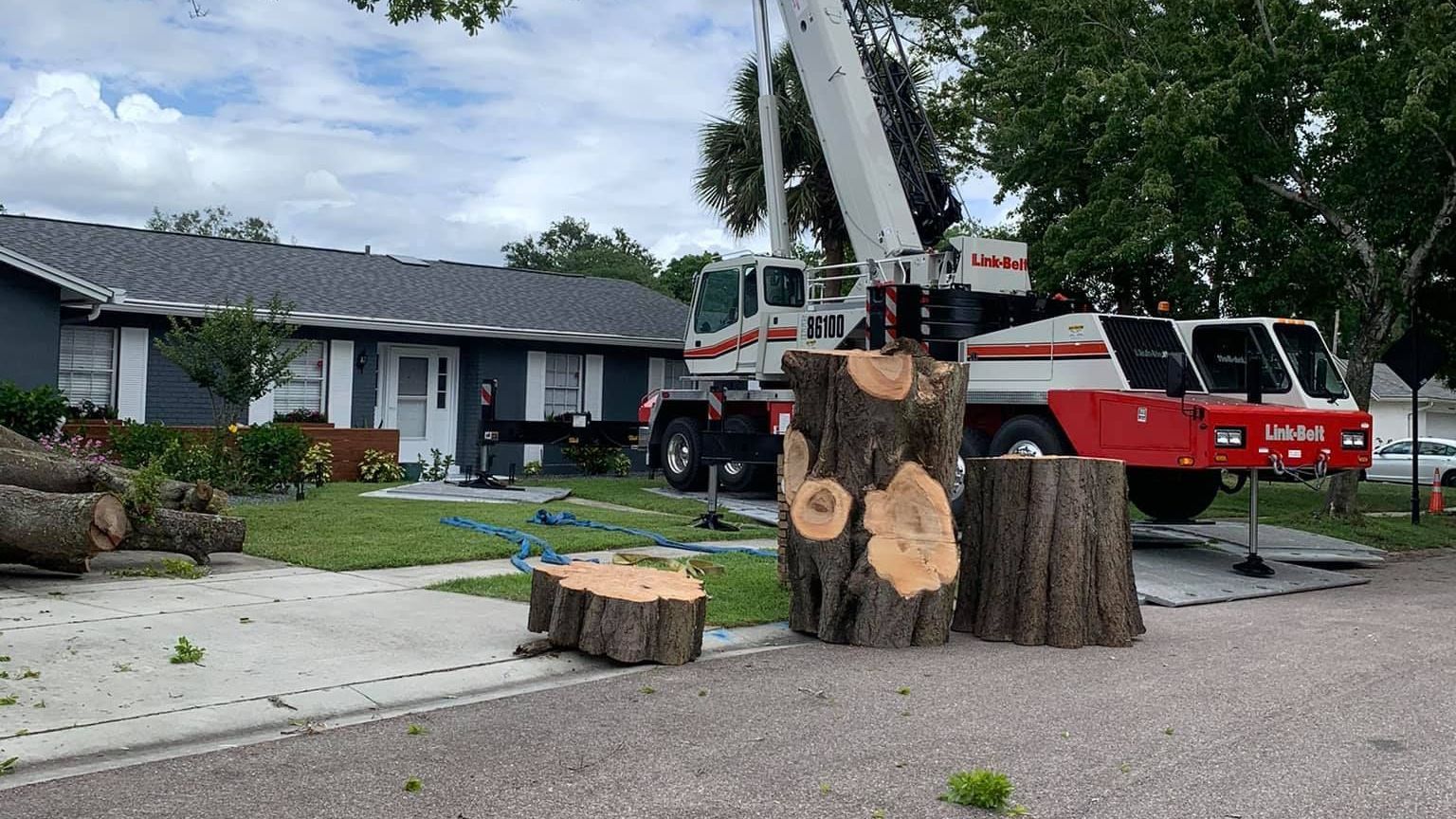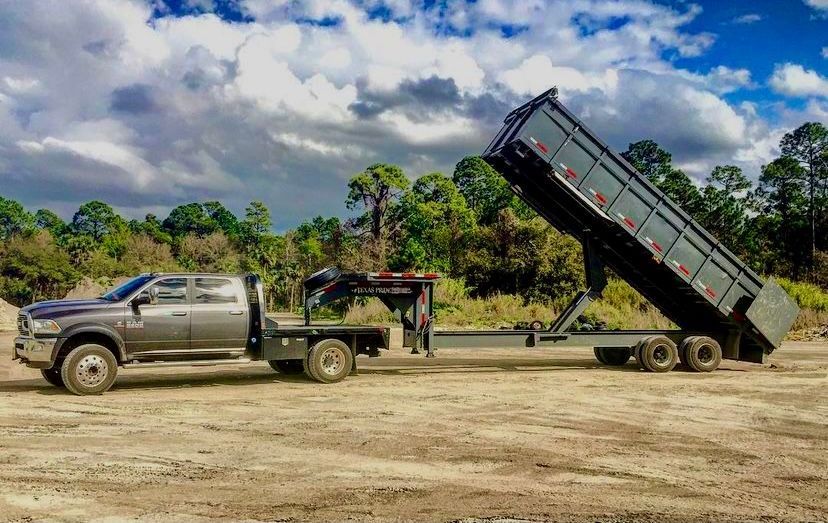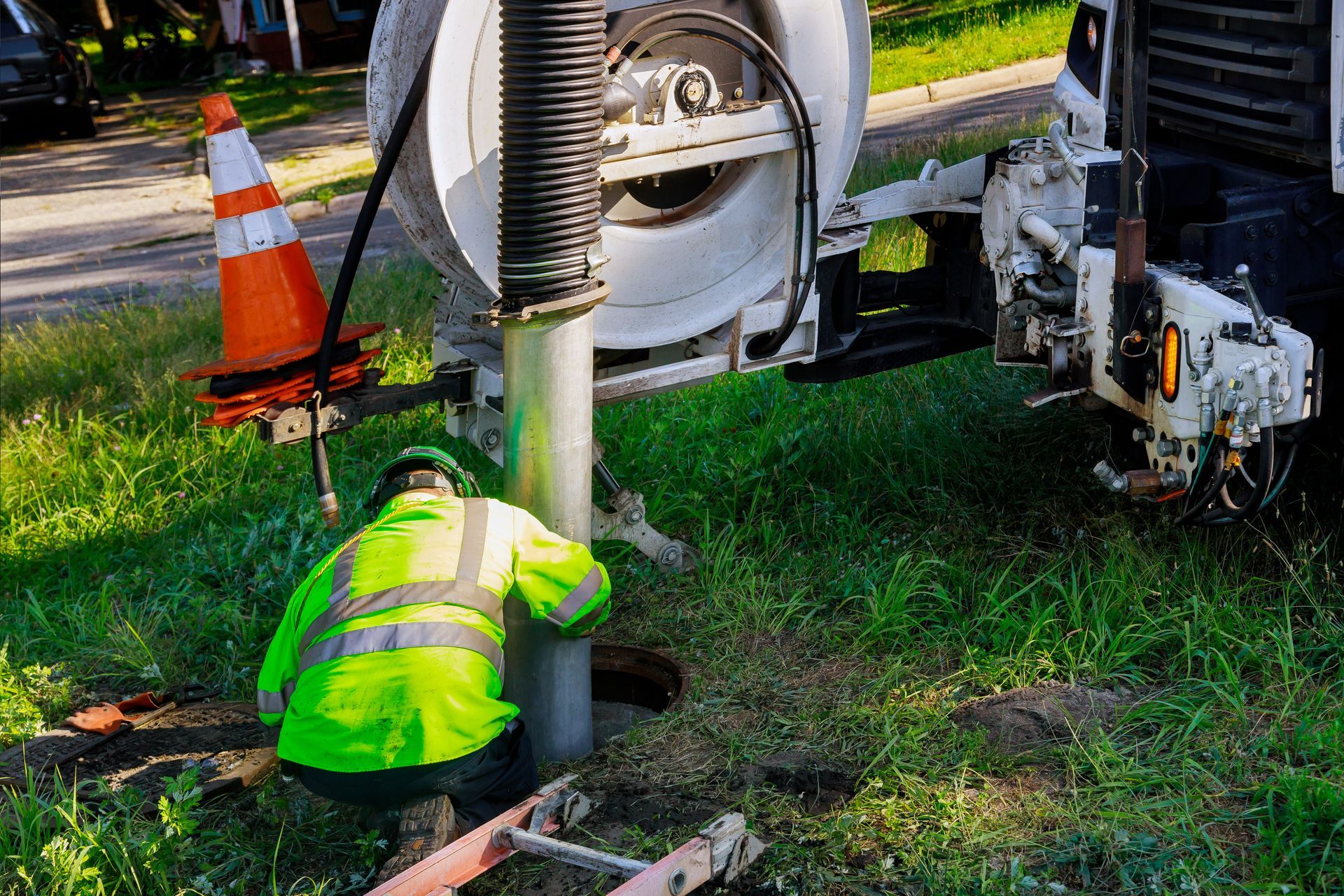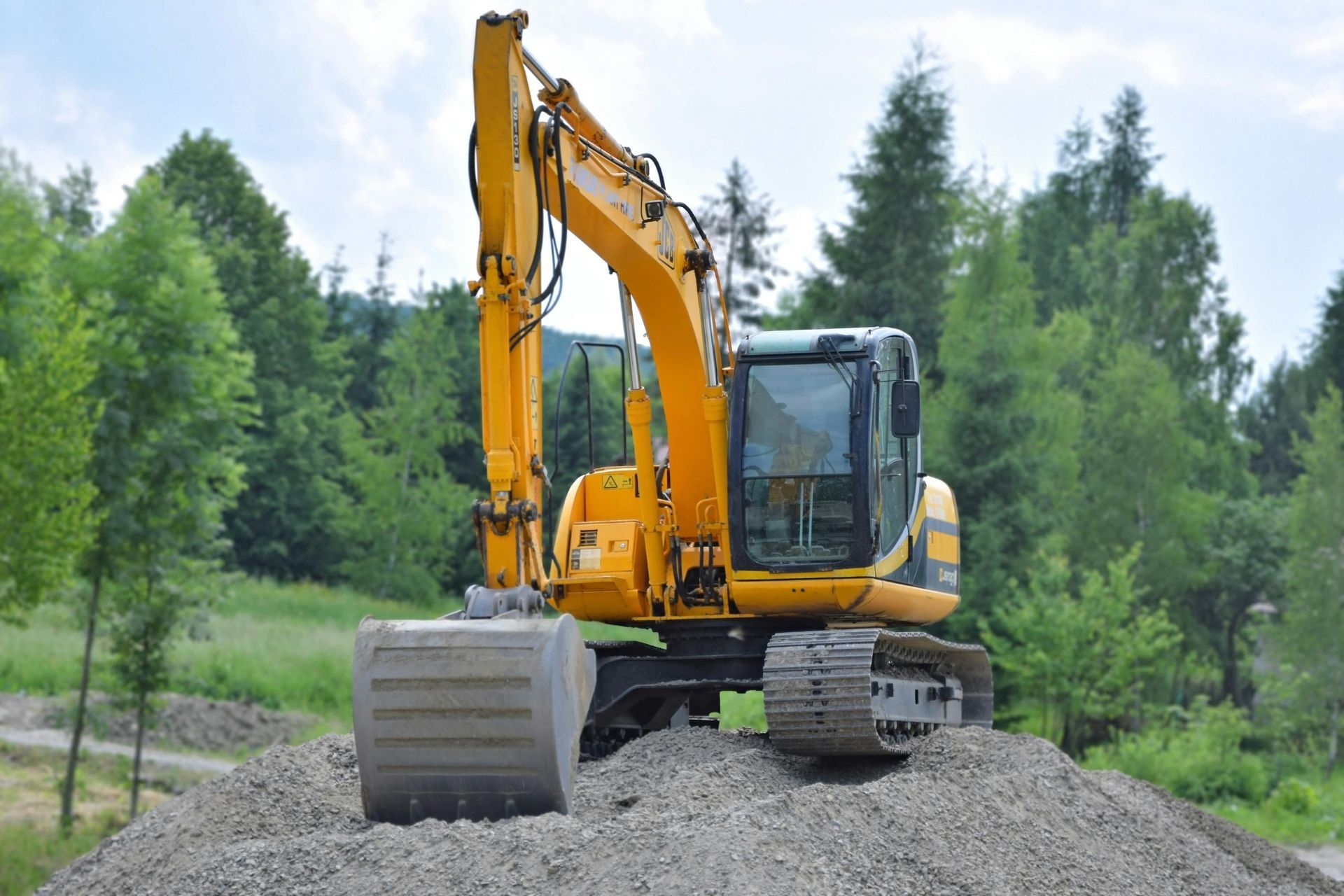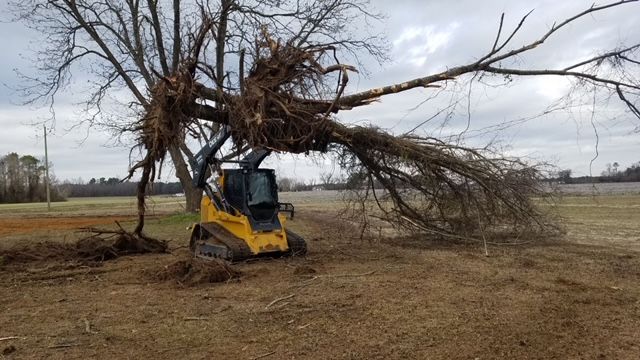Land Clearing 101
Understanding the Process and Benefits
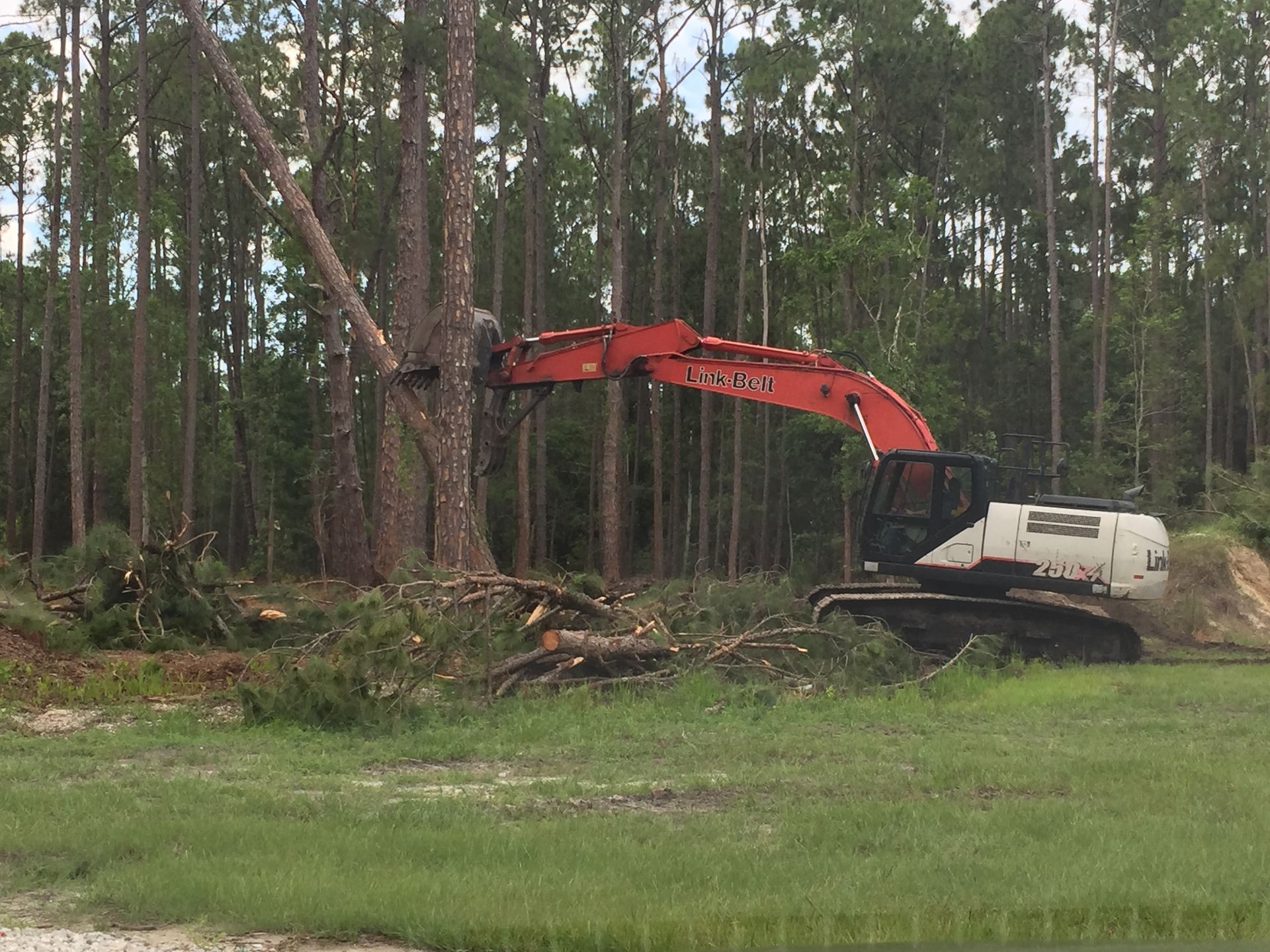
What is Land Clearing?
Land clearing is the process of preparing a property by removing trees, brush, and other vegetation to create space for construction or landscaping. If you're planning to build a home, expand your yard, or start a farm, this is the very first step.
This process involves clearing away barriers like trees, stumps, rocks, and more, allowing you to move forward safely with your project. With the help of heavy equipment like an excavator, bulldozer, or stump grinder, land clearing not only opens up the space but also improves drainage and prevents soil erosion, helping to maintain the health of your land. By clearing the area, you make it more functional and increase your property’s value.
Steps in the Land Clearing Process
Step 1: Decide If You Need Assistance
The first step in the land clearing process is deciding whether you can handle it yourself or if you’ll need professional help. If you’re dealing with a small yard or just a few tree stumps, renting a chainsaw and stump grinder from your local hardware store might be enough. Clearing a small area on your own can be manageable, especially if the ground is flat and there aren't many barriers.
However, if you're working with a larger plot of land filled with brush and debris, it's likely a better idea to hire a professional land clearing service. Uneven terrain or thick vegetation can make the job more difficult and potentially dangerous. A contractor with the right equipment, like an excavator or bulldozer, can do the job quickly and safely. You’ll also avoid the risk of injury or property damage, and the project will be completed in days instead of dragging on for weeks
Step 2: Check If a Permit Is Necessary
Before you begin clearing the land, it's important to find out if you need a permit. Depending on your location, different regulations apply to protect vegetation, soil erosion, or even local wildlife.
In some areas, you might need permission to remove certain types of trees or other natural features, especially if they are in an environmentally friendly zone or protected area. If you're unsure, your local land planning agency can guide you, or if you've hired a professional land clearing service, they can often handle the permitting process for you.
Obtaining the necessary permits is vital to ensure you're not breaking any laws related to land protection, drainage, or erosion control. Skipping this step can result in fines, project delays, or even legal trouble.
Step 3: Set a Budget
If you’re considering hiring a land clearing company, be aware that pricing can depend on several factors, such as the location, the type of equipment required, and how much debris needs to be cleared. Some tree cutters may charge per square foot, while others might base their fees on the complexity of the job and the terrain.
For those who prefer to clear the land themselves, it’s important to calculate all the costs upfront. You’ll need to budget for renting equipment like a chainsaw or stump grinder and possibly even heavier machinery, as well as the fuel cost and any additional supplies needed to get the job done. Don’t forget about debris removal—renting a roll-off dumpster or hiring a haul-away service is essential for clearing away everything once you’re done.
Step 4: Get Multiple Quotes and Compare
When you're ready to hire a contractor, it's essential to shop around and get multiple quotes to find one that fits your budget. Don’t settle for the first offer you receive! By comparing several estimates, you'll get a clearer sense of the average cost for your project. Be sure to also check online reviews and browse through examples of their previous work to assess their quality and reliability. Keep in mind that the cost of land clearing can vary depending on factors such as the size of your property, the urgency of the job, the terrain (like hilly areas or dense woods), and even the time of year.
Step 5: Mark and Protect the Areas You Want to Keep
Before the heavy equipment comes in, take some time to mark off any trees, plants, or structures you want to protect. If you’ve got a favorite tree or an area of vegetation you’d like to keep, make sure to clearly mark them. A good tip is to use bright, easy-to-see fencing or ribbons so they’re impossible to miss. This way, anyone working on the land knows exactly what needs to stay.
Step 6: Remove Existing Structures
Once all the prep work is done, it’s time to jump into the actual clearing process. The first step? Remove any old structures like sheds, barns, or even fences that are in the way. These must be torn down and hauled off so the land can be fully cleared. Don’t forget to dig up and remove any concrete foundations left behind—these need to go, too, for a fresh start. A great tip is renting a construction dumpster to help clean up. It makes the process smoother by keeping all the debris organized and out of the way.
Step 7: Clear Trees, Shrubs, and Vegetation
After the structures are cleared, the next step is removing trees, shrubs, and any leftover debris. Each tree needs to be cut down individually, which can take time, but hiring a professional service with the right equipment can speed things up. They can safely remove trees in minutes, making the job quicker and easier.
Once the trees are down, you can sell the wood to a lumber company, use it for firewood, or turn it into mulch. To clear smaller vegetation, use a hand trimmer, or you can have a brush mower in larger areas. Finally, dispose of the debris by burning, composting, or shredding it. After this, your land will be ready for the next steps.
Step 8: Remove Stumps and Begin Grubbing
Once the trees are down, it’s time to handle the stumps. This process is called grubbing. Start by digging around the base of the stump to expose the roots. The goal is to get a solid grip on the stump, so after you’ve cleared enough of the roots, wrap a strong, durable chain around it. Then, use a tractor or a truck to pull the stump from the ground.
Some stumps are tougher than others, especially if the roots run deep, so don’t rush it. You might need to dig deeper or even use a stump grinder if the stump is particularly stubborn.
Step 9: Fill Holes and Level the Land
Now that the stumps and boulders are gone, it’s time to smooth things out. Start by filling in any holes left behind with dirt. Pack the dirt down firmly so everything stays level and doesn’t settle later. If you’ve hired a contractor, they’ll likely use a grader to make the land smooth and even.
If you're prepping the land for farming or landscaping, using a plow can be really helpful. It does not only even out the soil but also mixes the grass and leaves, boosting the soil’s nutrients.
The Benefits of Land Clearing
1. Easier Access and Safer Property
Land clearing makes your property easier and safer to move around. By removing trees, overgrown bushes, shrubs, and other debris, you’ll have clear, open paths for walking, driving, or working. This also reduces the risk of accidents, like tripping or falling branches.
Another big benefit is lowering fire risks by clearing away dry or dead plants that could easily catch fire. With the land cleared, you get a safer, more accessible space for any project or activity you have planned.
2. Increased Property Value
Land clearing can significantly raise your property’s value. By opening up the space and giving it a clean, well-maintained look, you make it more appealing to potential buyers or renters, which can lead to a better price. Beyond appearance, cleared land becomes much more useful. It opens up opportunities for farming, building, or converting the space into an area for leisure activities, making your property more versatile. So, clearing your land isn’t just about improving looks—it’s a smart investment that increases both value and potential.
3. Enhanced Agricultural Productivity
If you want to use your land for agriculture, clearing it will increase productivity. By removing trees, rocks, and other obstructions, you create wider, more workable fields that make planting and harvesting much easier. Land clearing also helps with water management, allowing better irrigation and drainage to keep crops healthy and prevent issues like flooding or soil erosion. Plus, it helps control pests and diseases by eliminating hiding spots for insects.
4. How Land Clearing Helps Nature Thrive
Though land clearing involves removing vegetation, it can actually contribute to restoring wildlife habitats when done properly. By selectively clearing certain areas, you create open spaces that attract animals like deer and elk, and you can also establish wetlands that serve as breeding grounds for birds and amphibians. Land clearing also helps manage invasive species that threaten native wildlife and plants, allowing local ecosystems to recover and thrive.
5. Easier Construction and Development
By removing trees, brush, and debris, you create a flat, open area ready for laying foundations, building roads, or installing utilities. Taking care of this early on can save you both time and money by reducing the amount of site prep needed. Clearing the land also helps uncover potential challenges, such as hidden rocks or uneven terrain, that could cause delays if not addressed. By starting with a cleared, well-prepared site, you’ll make the entire construction process more efficient and help keep the project on track and within budget.
Frequently Asked Questions
How Do I Find a Reputable Land Clearing Company?
Finding a trustworthy land clearing company is easy if you know what to look for:
- Research: Start by exploring local companies. Check their websites and reviews to see their experience and customer feedback.
- License and Insurance: Ensure the company is licensed and insured. This protects you from liability if something goes wrong during the job.
- Proper Equipment: Make sure they have the right tools and expertise to handle your project efficiently without causing damage to the environment.
- Environmental Responsibility: Choose a company that follows eco-friendly practices and complies with local regulations.
- Compare Quotes and Timelines: Get multiple quotes and compare them. Look for value, not just the lowest price, and confirm their timeline fits your schedule.
Can Land Clearing Companies Remove Trees on My Property?
Yes, they can! Land clearing companies are equipped to remove trees, along with other vegetation and debris, to get your property ready for any plans you have.
How Much Does Land Clearing Cost per Acre?
Land clearing costs can range from $500 to $5,600 per acre, depending on several key factors. The number of trees to be removed and how easy the site is to access play a big role in determining the final price. Heavily wooded or hard-to-reach areas tend to be more expensive, while more open, accessible spaces usually cost less.
Ready to Clear Your Land? Contact Us Today!
Land clearing is an essential step in transforming any property, whether for construction, farming, or simply improving the landscape. It not only makes the land more accessible and safer but also increases property value, enhances agricultural productivity, and can even support wildlife habitat restoration.
If you're looking for professional land clearing services, Top ‘Em Drop ‘Em Solutions is here to help. Located in Sanford and serving all of Central Florida, we offer tree removal, stump grinding, dirt work, land grading, drainage installation, and site preparation. Call us today @ (407) 562-7093 to clear the way for your next project!
